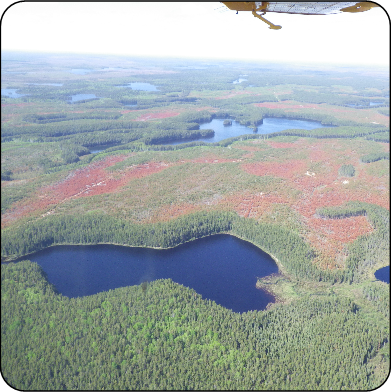Winter browning
Information about winter browning damage that affects trees in Ontario.
Overview
- Winter browning occurs periodically in Ontario and in other jurisdictions.
- Winter browning causes tree needles to dry out and turn brown; in some species, the needles may appear red, yellow or grey, or, in the case of blue spruce, purple.
- affected species include: white spruce, black spruce, jack pine, eastern white pine, red pine and balsam fir.
Damage characteristics
- Winter browning is caused by several factors working together; during periods of high amounts of sunshine, strong winds and warm temperatures, it causes conifers to lose water from their needles faster than it can be replaced, resulting in the needles drying out.
- The warm period is often followed by freezing temperatures, which enhances the problem and the dry needles eventually die.
- It occurs most severely on trees under 25 years old in plantations and on the edge of forest stands.
- Upper parts of the trees are more severely affected, while lower portions are often still green and unaffected due to protection from the snow pack.
- Damage is also more common on the south or west side of trees, and on edge trees with south and west exposures.
- It may take several years for trees to fully recover and have a full complement of needles; during this time trees are weaker and at higher risk of being negatively affected by other insects and diseases that can cause tree mortality.
- Winter browning can also occur when warm temperatures (that cause conifer needles to become physiologically active) are followed by cold temperatures that kill tissues that have lost cold tolerance.


Control measures
Trees that have been damaged can be helped by ensuring they are well watered during the growing season. A high nitrogen fertilizer in the spring or early summer will help stimulate new growth. Tree watering should be stopped in August during the period when trees alter their foliage to prepare for winter conditions. Watering can continue in the fall to ensure trees have adequate water supplies going into winter.
Trees will start growing again after winter browning incidents and landowners should be patient in allowing trees to recover. Dry needles can increase the fire hazard as they are quite flammable. In areas of extensive tree mortality, options exist for tree planting or aerial seeding to ensure areas regenerate to desired species.